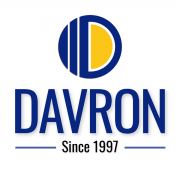These days, the internet is full of resume opinions and advice: how to write a great resume, what to avoid, and what you should or should not do. But what do you believe, and is it all true?
Creating a standout resume in a competitive job market can be challenging, and even minor failures can weaken your files. From overcrowding your resume with unrelated details to relying on ambiguous and cliched languages, common mistakes can undermine your impact and obscure your strengths. This post will help you explore some of the most discussed or questionable resume practices and create a clear, outcome-focused resume that will attract the attention of resume readers. right reason.
First, I presented 6 frequently rejected or misunderstood resume questions/topics On LinkedIn And ask the experts to help readers and writers to resume. Questions include:
- Should I post a photo on my resume?
- How much is your resume?
- Is it okay to add color or shading to my resume?
- Is it a good habit to use personal pronouns on your resume?
- Do you need to include the location in your resume (city, state/state, postal code/zip code) or do you have none at all?
- Does ATS automatically remove resumes?
As you can imagine, the responses to these topics were varied, but some clear warnings and themes emerged. Let’s break down each of the above questions. I will definitely share my thoughts.
Should I post a photo on my resume?
Some countries accept or require the inclusion of photos on their resumes, but not in North America.
Unfortunately, many resume templates online include photo spots. This can be confusing for job seekers. If you have a photo spot in a flashy online template, you should include it, right? No, not always. As mentioned before, resume photos raise eyebrows in North America.
Former recruiter Ben Wyan reminds us that the photos not only bring up real estate, but also “introducing potential biases.”
However, this is where this topic is debatable. “It probably doesn’t matter in any way, given that most people have photos on LinkedIn,” says resume writer John Herzog.
I tend to agree with John. If candidate photos are easy to find online, why is it important to know if they are on your resume? Food for thought.
How much is your resume?
The length of a resume has been debated for a long time, like Dr. Seuss’ novels, including one page, two pages, short pages, and long pages. Which one is it?
The overall answer to resume length is that there is no answer here that fits all sizes and there is a good reason. Everyone is unique, with different career length, experience level and different details.
Writer and interview coach Barb Penny said the answer to the length of his resume was “it depends on. Many executives and others with years of experience have 3 pages to provide photos of expertise. Need it. New graduates and new graduates of the workforce can tell their career stories on one page. There are always exceptions.”
Overall, I want to make my resume easy to read and not too overwhelming. So yes, there should be a limit to the length of the page. Continue. Resume writer Steve Schmanski reminds us that “most readers scoop up their resumes, so you need a concise, handmade resume to quickly gain their interest.”
My take? The length of the resume does not determine validity. Keep it short, concise, tailor it and target it. It may be less on your resume.
Is it okay to add color or shading to my resume?
In just a few years, my resume has moved from basic black and white to a more designed format. Recently, the consensus between recruiters and resume readers is that resumes are Easy to read. Design is secondary to content and do not interfere with content or distract you.
Writer Pamela Skill agrees that colour and shading are “good for emphasizing sections and leading readers to the document,” but not overdoing it. Additionally, industry needs to be considered when making resume design decisions. “Creative fields may embrace more colour and design elements, but more conservative industries (i.e. finance or law) usually expect clean and simple formats,” says the resume writer. Paula Christensen reminds me.
I personally love strategically designed resumes. Beware of the word Strategic. This means carefully including design components, colors, and/or shading to guide your eyes and help key content pop out of the page. A resume doesn’t have to look boring, and the design can complement great content. Executive resume writer Marie Plett Lane challenges job seekers to “become “separated from other zebras” by making their resumes unique.
Is it a good habit to use personal pronouns on your resume?
When referring to pronouns on a resume, I mean first-person languages, particularly containing the words “me, me, or me.”
A resume is usually written to the first person who has subtracted the pronoun. For example, instead of saying, “I managed 10 teams,” you would simply share it with “I managed 10 teams.”
But is the use of personal pronouns a complete no-no in your resume or is it shifting to an era of more valuable and acceptance?
The consensus of respondents suggests that individual pronouns should still be skipped on resumes, as resumes do not actually require pronouns. Without them, it would be more efficient. could be” (Karen Styles, Agency Recruiter). Steve Shumansky agrees that while resumes are not the best place for them, “your LinkedIn profile is free to offer this in an attractive and personal way.”
Over the past 15 years on my resume, I have only had personal pronouns on my clients’ resumes. For me, resumes benefit from brevity, which is best achieved without pronouns.
Do I need to include the location in my resume (mail address)?
The days of including full mailing addresses on your resume are over. In addition to not requiring this information during the initial screening and hiring process, these facts are no longer safe to share publicly.
Randall Germany, a talent acquisition specialist, emphasizes that “normal locations are fine,” but “do not include an exact address on your resume, as there are too many bad actors to make a safe move.” He emphasizes that.
So why include common locations? Karen Styles said: “It is useful when you are recruiting candidates in specific locations in your office role as a recruiter using ATS, city/state, and postal codes. Doing a candidate resume search in a geographic area. You can do it.”
When writing your resume, you aim to include a minimum of city and state/state to support your search results, and coordinate the strategies needed for those seeking to relocate or secure remote work.
Does ATS automatically remove resumes?
Finally, we close with one of the hottest and often most moving topics. Ramp Out claims on the Internet and social media promote the Applicant Tracking System (ATS) as a robot that reads and rejects resumes.
These extreme claims are largely wrong.
The truth is that ATSS is like a huge digital filing cabinet. They collect and save resumes. Yes, recruiters can search for criteria of their choice and set them in knockout questions, but people manage these systems, read their resumes and make employment decisions.
Lynn Eskite-Tant’s military career transition coach explained: They make it as they are instructed to do. If they are instructed to exclude candidates without specific credentials, such as licenses or degrees, they do just that. The bottom line of the ATS means there is no reason to rule out you if you match your requirements. ”
As Lynn mentions, ATS can rule out resumes through selection criteria, often known as knockout questions. However, career coach Diana Alto knows “exactly zero recruiters” who rely solely on the system to make final decisions. [flagged] Restart to make sure something is not being evaluated incorrectly. ” Karen Styles agrees and shares that her ATS “we humans review the application” and does not auto-reject.
My warning is not to believe rumours that ATS is a big, bad, resume eating machine. Yes, these systems can parse, search, and flag files as matches. Yes, these systems can be programmed with knockout questions. But those who manage the system are still reading their resumes in control, as Steve Brady agreed to. It’s the recruiter who told ATS what to do. ”
There are many resume truths and distrusts there. It can be difficult to break them apart, so remember that there is no best way to carefully qualify your source and write a resume. You are unique. So should your resume be the same.
Are you looking for a resume that will help you spot top jobs? I’ve covered you. Please see our resume creation service.





